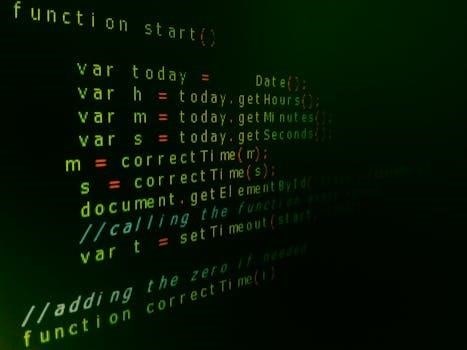E-flite UMX Turbo Timber Manual Overview
This section provides a general look at the user manual for the E-flite UMX Turbo Timber. It encompasses instructions, safety guidelines, and maintenance. It is essential to read all the instructions before using the product. The manual helps to ensure correct operation and to avoid potential damage.
The E-flite UMX Turbo Timber is a scaled-down version of the popular Timber 1.5m model, designed for exciting STOL (Short Take Off and Landing) adventures. This ultra-micro model offers a unique combination of versatility and performance; It’s an upgrade to the original UMX Timber, featuring a modern turboprop-styled nose. The updated design incorporates a reinforced airframe and a 2S and 3S compatible power system for enhanced STOL capabilities. The UMX Turbo Timber is equipped with AS3X and SAFE technology, providing stability and ease of use. This model is perfect for pilots seeking a compact yet capable aircraft. The E-flite UMX Turbo Timber offers an exceptional flight experience with its advanced features and robust design. It is designed to deliver both the fun of short takeoffs and landings and the excitement of aerobatic maneuvers. This makes it suitable for a wide variety of pilots and flying environments.
Key Features of the UMX Turbo Timber
The UMX Turbo Timber boasts several key features that make it a standout model. It includes AS3X technology, enhancing flight stability by counteracting external forces like wind. The incorporation of SAFE technology offers selectable flight modes, aiding beginner pilots and providing additional safety. The aircraft is equipped with an updated brushless electronic speed control (ESC) and receiver with AS3X and SAFE. An updated flap servo improves control responsiveness. It has a modern turboprop-styled nose and a reinforced airframe, enhancing both appearance and durability. The power system is compatible with both 2S and 3S LiPo batteries for varied performance. The model is designed for excellent STOL capabilities, allowing for short takeoffs and landings. These features make the UMX Turbo Timber a versatile and user-friendly aircraft. The combination of technology and design makes it a great choice for both new and experienced pilots.

Manuals and Documentation
This section outlines the availability of instruction manuals and documentation for the E-flite UMX Turbo Timber. It provides details on accessing PDF versions of the manuals and mentions updates to the information provided.
Available Instruction Manuals
The E-flite UMX Turbo Timber comes with comprehensive instruction manuals designed to guide users through setup, operation, and maintenance. These manuals are crucial for both beginners and experienced pilots to ensure safe and proper handling of the aircraft. There are several versions of the manual, catering to different releases and updates of the model. Specifically, manuals are available for the original UMX Turbo Timber, as well as the updated UMX Turbo Timber Evolution; The manuals provide detailed information on all aspects of the aircraft, from binding the transmitter to understanding the various flight modes. Furthermore, the manuals include technical specifications, safety precautions, and troubleshooting tips. These resources are readily accessible in multiple formats, such as PDF downloads, and are often included with the product upon purchase. It is important to consult the correct manual for your specific version of the UMX Turbo Timber to ensure accurate information and optimal performance. Always refer to the latest available manual for updated details.
Downloading PDF Manuals
Accessing the E-flite UMX Turbo Timber manuals in PDF format is straightforward, offering convenient offline viewing and printing options. These digital manuals are typically available for download from the official Horizon Hobby website, and various other online resources, which often include retailer sites and hobby forums. The PDF format allows users to easily search for specific information, zoom in on diagrams, and print relevant sections as needed. To locate the correct manual, it’s important to specify the exact model version, such as the original UMX Turbo Timber or the UMX Turbo Timber Evolution. Once found, the PDF manual can be downloaded directly to your computer, smartphone, or tablet. These manuals are a practical resource, especially for pre-flight preparations, field adjustments, or troubleshooting. Always ensure that you are downloading the manual from a trusted source to avoid corrupted or outdated files. Having a digital copy of the manual enables quick reference anytime and anywhere.
Updated Manual Information
It’s crucial to stay informed about the latest updates to the E-flite UMX Turbo Timber manual, as these revisions often reflect changes in the aircraft’s components or operating procedures. E-flite periodically releases updates to manuals to accommodate modifications to the receiver, electronic speed control (ESC), or even the flap servo. For instance, models produced after December 2021 include an updated DSMX brushless ESC/receiver and an updated flap servo, which are both detailed in updated manuals. To ensure you have the most current information, it’s recommended to check the official Horizon Hobby website, where you’ll find the newest versions of the manuals available for download. These updated manuals may include specific instructions about binding, flight modes, and SAFE Select usage related to updated electronic components. Always verify the manual’s publication date to confirm you’re using the most recent version. This will help you operate the aircraft safely and effectively.

Technical Specifications
This section details the UMX Turbo Timber’s specifications, including dimensions, weight, motor type, and power system. It also covers receiver, ESC, and technology like AS3X and SAFE. This is essential for understanding the aircraft.
Dimensions and Weight of UMX Turbo Timber
The E-flite UMX Turbo Timber is designed as a compact and lightweight model, making it ideal for flying in smaller spaces. Specifically, the aircraft has a wingspan of 700 millimeters, providing a good balance between stability and maneuverability. The length of the UMX Turbo Timber is measured at 467 millimeters, contributing to its overall small size. The airframe is constructed to keep the model lightweight, and it weighs in at just 121 grams. This low weight is crucial for its flying characteristics, allowing for slower flight speeds and enhanced short takeoff and landing (STOL) capabilities. These dimensions and weight make it easy to transport and fly, appealing to both beginner and experienced RC pilots. The compact design does not compromise performance, and it offers an excellent flying experience. The size and weight specifications make it easy for pilots to manage the aircraft in various conditions.
Motor and Power System
The E-flite UMX Turbo Timber is equipped with a powerful and efficient brushless motor that is essential for its performance. The motor is a 180BL 3400kv variant, which delivers the necessary thrust for both normal and STOL (Short Takeoff and Landing) flights. This brushless motor is known for its reliability, durability, and the smooth power delivery it offers. The power system works in conjunction with a three-blade propeller, which is optimized for the motor’s performance, enhancing thrust and efficiency. The entire system is designed to provide the plane with a wide range of speeds and to be responsive to user input. The motor is combined with a compatible electronic speed control (ESC), which regulates the power and ensures smooth operation. Together, the motor, propeller, and ESC contribute to the overall dynamic flying experience of the UMX Turbo Timber. The plane’s power system allows it to execute various maneuvers with ease and precision.
Receiver and Electronic Speed Control (ESC)

The E-flite UMX Turbo Timber incorporates an updated DSMX brushless electronic speed control (ESC)/receiver unit. This unit plays a crucial role in managing the aircraft’s power system and receiving control inputs from the transmitter. The specific ESC/receiver model is the EFLA6421 BLA, which integrates both functions for compact design and improved performance. The receiver is compatible with Spektrum DSM2/DSMX technology, ensuring reliable communication and control. This integrated system is particularly designed to work with the brushless motor, providing efficient and responsive control of the aircraft’s speed and power. The receiver also integrates AS3X and SAFE Select technologies, which enhance the aircraft’s stability and provide additional flight modes for both beginner and experienced pilots. The ESC manages the power delivered to the motor, ensuring smooth and efficient operation, and working harmoniously with the receiver to provide a seamless flying experience. It is essential to ensure the ESC and receiver are correctly paired with the transmitter for proper operation.
AS3X and SAFE Technology
The E-flite UMX Turbo Timber is equipped with AS3X and SAFE technologies, enhancing its flight characteristics. AS3X (Artificial Stabilization 3-aXis) is a sophisticated system that works behind the scenes to stabilize the aircraft, counteracting the effects of wind and turbulence. This technology helps to provide a smoother and more precise flying experience. SAFE (Sensor Assisted Flight Envelope) technology provides additional layers of safety, especially for beginner pilots. SAFE Select allows pilots to choose between different flight modes that restrict the aircraft’s flight envelope, preventing over-control and loss of orientation. These modes help to make learning to fly easier and more enjoyable. Together, AS3X and SAFE Select make the UMX Turbo Timber accessible to a wide range of pilots, from beginners to seasoned flyers. The integration of these technologies ensures stability, control, and enhances the overall flying experience, and it is a key feature of the plane.

Operation and Setup
This section covers the steps required for the proper operation and setup of the E-flite UMX Turbo Timber. It includes binding the transmitter, flight mode selection, flap settings, and critical safety precautions to follow.
Binding the Transmitter
To establish a connection between your Spektrum DSM2/DSMX transmitter and the E-flite UMX Turbo Timber’s receiver, a binding process is necessary. This procedure ensures that the transmitter and receiver are paired, allowing for proper control of the aircraft. Begin by ensuring the aircraft’s receiver is powered on, typically through its electronic speed control (ESC) which is connected to a battery. Consult your specific Spektrum transmitter’s manual for the precise binding steps, as procedures can vary slightly between models. Generally, this involves pressing the bind button on the transmitter and applying power to the receiver, which enters bind mode. A successful bind is often indicated by a solid light on the receiver. After binding, it is essential to power cycle both the transmitter and the aircraft to finalize the connection. Failure to bind correctly may result in loss of control, so verify that the aircraft responds correctly to transmitter inputs. Always refer to both your transmitter and the E-flite UMX Turbo Timber’s manuals for comprehensive binding instructions.
Flight Modes and Channel Control
The E-flite UMX Turbo Timber typically features multiple flight modes, often controlled by a designated channel on your transmitter. The most common flight modes are AS3X and SAFE Select. AS3X (Artificial Stabilization 3-aXis) provides enhanced stability and control by counteracting external forces like wind. SAFE Select, when activated, imposes flight envelope limits and adds self-leveling capabilities, making it easier for beginners to fly. Channel 5 is often used to switch between these modes. Channel control is crucial for operating the aircraft. Usually, channels are assigned to functions like throttle, ailerons, elevator, and rudder. Flaps are often controlled through channel 6 and may also be used to toggle SAFE Select. Understanding your transmitter’s channel assignments and the associated flight mode settings is essential for safe and effective operation. Always refer to your transmitter and the aircraft’s manuals to fully understand channel allocation and flight mode configurations.
Flap Settings and SAFE Select
The E-flite UMX Turbo Timber often includes flaps, which are controlled via a dedicated channel, typically channel 6. These flaps are used to increase lift at lower speeds, enabling short takeoffs and landings (STOL). Flap positions can be varied, usually with a neutral position, half flap, and full flap. Some models of the UMX Turbo Timber use flap settings to trigger SAFE Select. SAFE Select is a feature that provides increased stability and flight envelope protection. When activated, SAFE Select will limit the aircraft’s pitch and roll angles. In specific setups, half or full flap positions may activate SAFE Select, while no flaps will disable it and put the model into AS3X mode. This allows pilots to easily switch between enhanced stability and a more direct feel. It is important to consult the manual to understand the exact behavior of flap positions and SAFE Select on your model.
Safety Precautions and Maintenance
Safety should always be the top priority when operating the E-flite UMX Turbo Timber. Before each flight, inspect all components for damage or wear. Ensure that control surfaces move freely and that the propeller is securely attached. Always fly in a spacious, open area away from people, buildings, and other obstacles. Avoid flying in adverse weather conditions, such as high winds or rain. When handling batteries, follow the manufacturer’s instructions for charging and storage. Regularly check the electronic speed control (ESC), receiver, and servos for proper function. After each flight, clean the aircraft with a soft cloth and store it in a safe place. Proper maintenance and adherence to safety precautions are essential for a safe and enjoyable flying experience. Always consult the manual for specific guidelines and recommendations.




















